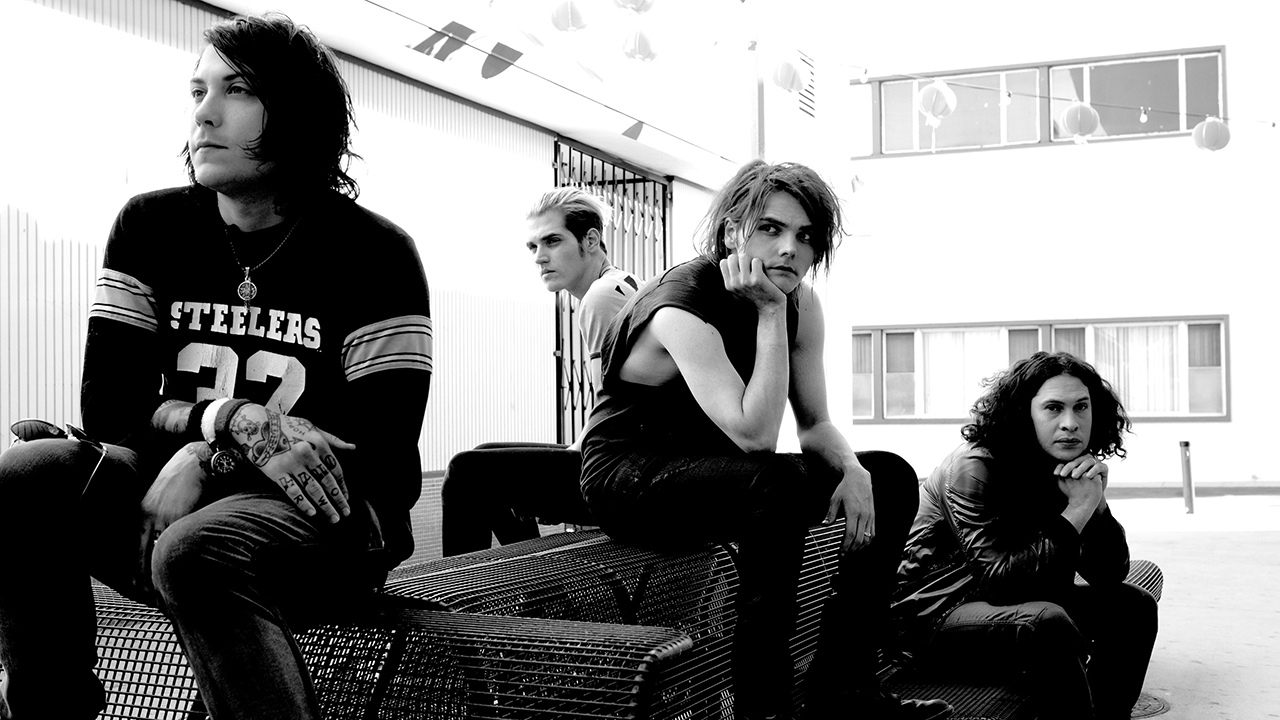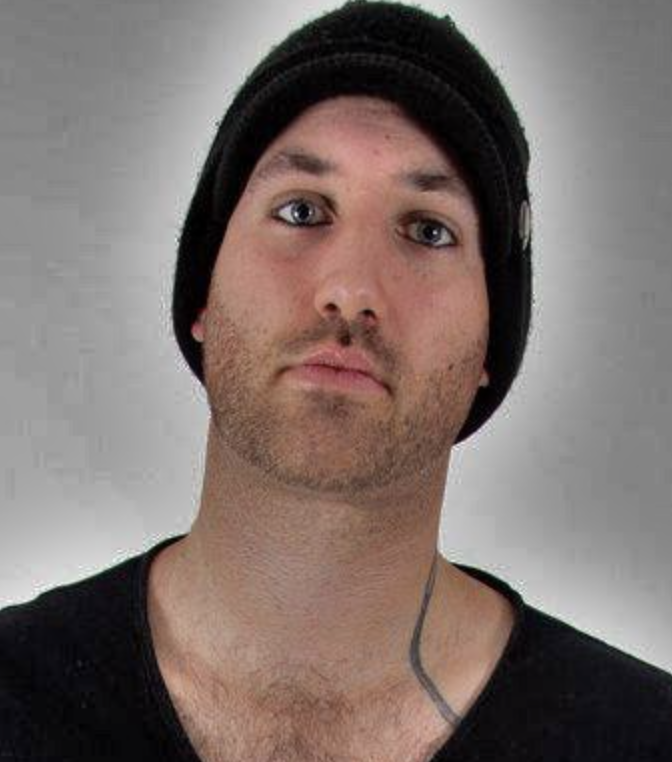My Chemical Romance and the evolution of emo
They became poster children for one of the most misunderstood genres in the history of heavy music, but did My Chemical Romance ever fit the emo bill to start with?

When The Daily Mail waged a typically putrid and ill-informed campaign against My Chemical Romance and the dangers of ‘emo’ music in 2008, it was the first time many people had ever been confronted by the term. Much guffawing and puzzled looks were exchanged around the country by so-called ‘normal’ folk. What was this emo music that My Chemical Romance were the leading lights of?
The irony, to anyone au fait with the roots of this music, is that when MCR were tagged as the genre’s figureheads, it totally changed the definition of what emo actually was. The tag ‘emo’, derived from the emotional hardcore of the mid-80s punk scene, bears little or no resemblance to Gerard Way and co. From Rites Of Spring’s meek and melody-heavy tunes, the Descendents’ geeky, lovelorn buzzsaw punk or Fugazi’s discordant, socially conscious and freeform ire, the inspiration for emo was radically different from the self-loathing horror punk it’s now associated with.
It was established as a genuine movement and sub-genre during the 90s as a slew of bands took the sound of hardcore and stripped it of all the bullish machismo that had become the norm, instead infusing it with an honesty and sensitivity that had never been heard before. Jawbox, Far, Nada Surf, Gameface, Garrison and more all existed deep within the underground, pulling in a more introspective, thoughtful college audience that eschewed the glue-sniffing, phlegm-gobbing aesthetic of traditional punk rock. These were bands who were influenced as much by The Smiths as they were by Black Flag – ironic given that MCR openly admitted that those two groups had a huge influence on their sound.
What they didn’t do was sell records, ensuring that emo was still an unheard-of, word-of-mouth movement in the main. That was until the turn of the millennium, as the globe-straddling commercial behemoth of nu metal began to run out of ideas and its fans were forced to search elsewhere for an antidote to its creative decline.
Those seduced by the heavier elements soon found sanctuary in the nascent metalcore movement and the reimagining of thrash that bands such as Lamb Of God and Trivium delivered. But for those who related to early nu metal’s wounded lyrical honesty and forward-thinking sonic approach, the void was filled by a group of post-hardcore acts, led by Glassjaw, At The Drive-In and …And You Will Know Us By The Trail Of Dead. They began to actually infiltrate MTV and mainstream culture while being confusingly monikered as ‘emo’, ‘post-rock’ and ‘screamo’ at various times. Clearly, emo was still impossible to pin down to an actual sound.
It was the success of Jimmy Eat World, Thursday, Taking Back Sunday and British acts Funeral For A Friend and Hundred Reasons that offered emo a clearly defined sound and look. Skinny jeans, fringes and classic American apparel were married to chiming guitars, whisper-to-shriek vocals and a melding of anthemic choruses with indie-esque punk.
This is where MCR come in. Having toured with the aforementioned Thursday and Taking Back Sunday here in the UK, it was easy to pigeonhole them alongside their peers, yet they were radically different to those bands. The only real comparisons would be AFI and Alkaline Trio, two bands that ignored heartbreak and introspection and instead concentrated on a black-hearted, gothic-heavy, macabre sound that was strongly influenced by the Misfits’ B-movie schlock punk.
Sign up below to get the latest from Metal Hammer, plus exclusive special offers, direct to your inbox!
In fact, Gerard Way himself stated bluntly that MCR never felt part of or identified with the scene. “Basically, it’s never been an accurate way to describe us,” he told American college website The Maine Campus. “I think emo is fucking garbage; it’s bullshit. I think there’s bands that we unfortunately get lumped in with that are considered emo and by default that starts to make us emo.”
Of course, once MCR broke, the look and sound of emo were defined by their every action. Despite being “vocally anti-violence and anti-suicide”, themes of self-harm, depression and distress became inexplicably linked with their sound and image. They were followed by countless also-rans trying to pull the exact same trick. Now every band that adds even a touch of melancholy to their music, from Black Veil Brides to Bring Me The Horizon, are sneeringly referred to with the tag.
For better or worse, the change in emo’s DNA is all due to the massive impact of My Chemical Romance.
My Chemical Romance head out on tour later this year. Check out full dates below:
Jun 18: Milton Keynes, Stadium MK, UK
Jun 20: Milton Keynes, Stadium MK, UK
Jun 21: Milton Keynes, Stadium MK, UK
Sep 09: Detroit, Little Caesars Arena, MI
Sep 11: St Paul Xcel Energy Center, MN
Sep 12: Chicago Riot Fest, IL
Sep 14: Toronto Scotiabank Arena, ON
Sep 15: Boston TD Garden, MA
Sep 17: Brooklyn Barclays Center, NY
Sep 18: Philadelphia Wells Fargo Center, PA
Sep 20: Atlanta Music Midtown, GA
Sep 22: Newark Prudential Center, NJ
Sep 26: Sunrise BB&T Center, FL
Sep 29: Houston Toyoto Center, TX
Sep 30: Dallas American Airline Center, TX
Oct 02: Denver Pepsi Center, CO
Oct 04: Tacoma Dome, WA
Oct 06: Oakland Arena, CA
Oct 08: Los Angeles The Forum, CA
Oct 10: Sacramento Aftershock, CA
Oct 11: Las Vegas T-Mobile Arena, NV

Stephen joined the Louder team as a co-host of the Metal Hammer Podcast in late 2011, eventually becoming a regular contributor to the magazine. He has since written hundreds of articles for Metal Hammer, Classic Rock and Louder, specialising in punk, hardcore and 90s metal. He also presents the Trve. Cvlt. Pop! podcast with Gaz Jones and makes regular appearances on the Bangers And Most podcast.
